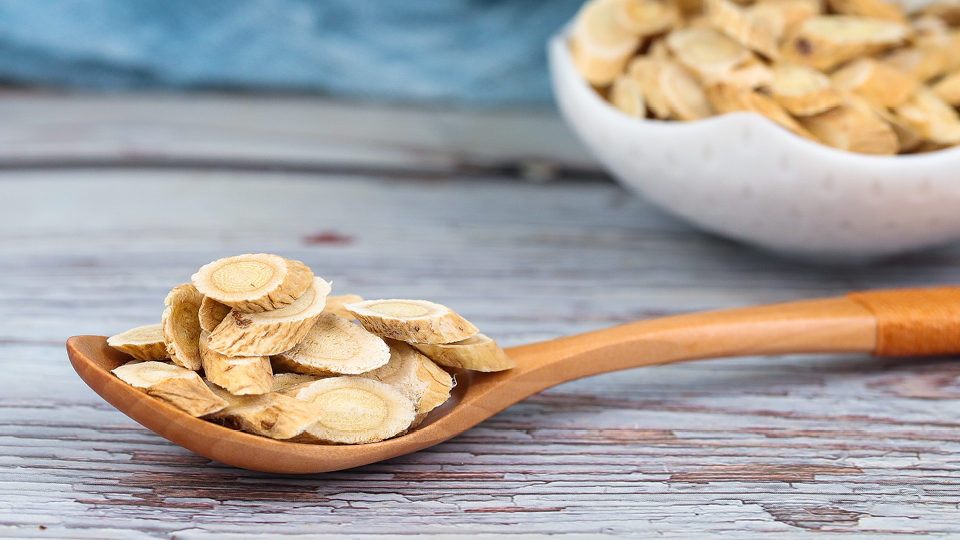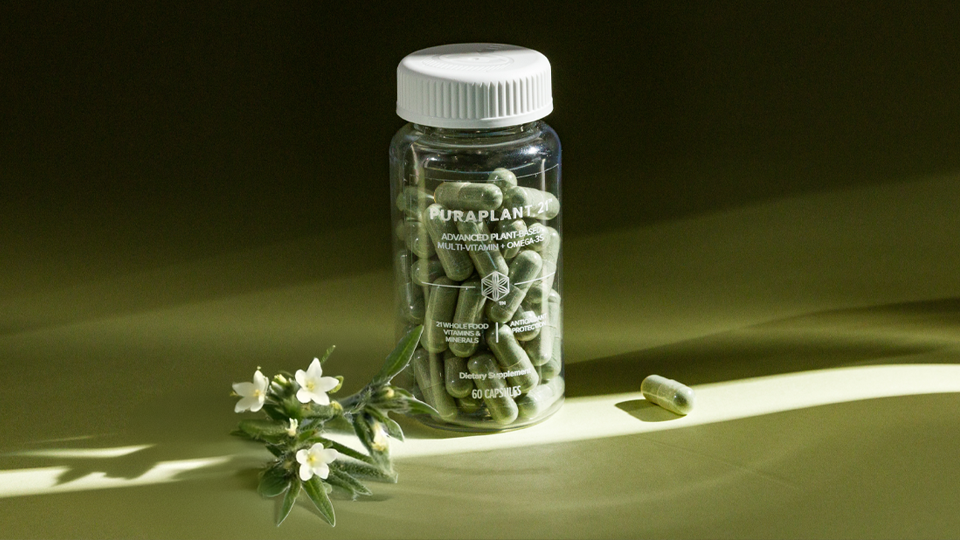With its green foliage and pastel-hued flowers, the astragalus plant can be found in both temperate and arid regions growing alongside dry riverbeds and in northern forests. Like many adaptogenic plants, it thrives in harsh environments.
Despite its long history of use by many cultures, researchers across the globe are just beginning to investigate the benefits of this popular herb.
The Botany and Biochemistry Behind Astragalus
The astragalus plant is a perennial plant that is part of the legume family like peas. Across Asia, Europe, and North America, there are over 2000 identified species of astragalus. However, Astragalus membranaceus remains the most cultivated species for dietary supplements and Traditional Chinese Medicine (TCM).
Astragalus contains over 200 phytochemicals. These compounds vary based on the species and plant part, but the root of Astragalus membranaceus remain the primary focus for its three main active components: saponins, polysaccharides, and flavonoids (1, 2). These three compounds are nutrients found in various plant-based foods and promote benefits for healthy immune function, energy, and overall wellbeing (1). Additionally, the roots of the astragalus plant are rich in bitter-tasting astragalosides. These compounds have been investigated for their role in supporting healthy immune function (3, 4).
Ancient and Modern Benefits
First noted in The Divine Husbandman’s Classic of Materia Medica, the earliest known book on traditional Chinese herbs, astragalus root is commonly used in TCM. For hundreds of years, TCM has promoted astragalus for its beneficial impact for supporting the immune system, energy, and gastrointestinal health (5). To this day, it continues to be among the most used herbs in TCM practices.
As astragalus root gains popularity, many across the globe consume astragalus root as a tea or dietary supplement for its health-boosting effects (6). Astragalus is well-regarded for its exceptional safety profile, leading to increasing research focus from large institutions interested in its nutritional and adaptogenic effects (7). Researchers are actively investigating many of the traditional benefits of astragalus, such as supporting healthy immune function and energy (8, 9).
As studies dive deeper into its biochemistry, researchers learn more about astragalus and its potential synergistic effects in combination with other botanicals in combating the effects of stress (10).
Astragalus is an adaptogen that has been traditionally used by many cultures to help the body adapt to the effects of stress. It’s among the most commonly used herbs in TCM and has recently become the subject of scientific interest.
References
- Guo Z, Lou Y, Kong M, et al. A Systematic Review of Phytochemistry, Pharmacology and Pharmacokinetics on Astragali Radix: Implications for Astragali Radix as a Personalized Medicine. Int J Mol Sci. 2019 Mar 22;20(6):1463.
- Song JZ, Yiu HH, Qiao CF, et al. Chemical comparison and classification of Radix Astragali by determination of isoflavonoids and astragalosides. J Pharm Biomed Anal. 2008 Jun 9;47(2):399-406.
- Kwon HJ, Hwang J, Lee SK, et al. YD (2013) Astragaloside content in the periderm, cortex, and xylem of Astragalus membranaceus root. J Nat Med 67(4):850–855
- Zhang WJ, Frei B. Astragaloside IV inhibits NF- κ B activation and inflammatory gene expression in LPS-treated mice. Mediators Inflamm. 2015;2015:274314.
- Jing, L., Zhong-zhen, Z., & Hubiao, C. (2011). Review of Astragali Radix. Chinese Herbal Medicines, 3, 90-105.
- Wang SC, Shan, JJ, Wang, ZT, et al. Isolation and Structural Analysis of an Acidic Polysaccharide from Astragalus membranaceus (Fisch.) Bunge. J Integr. Plant Biol. 2006 Nov. 4; 48:1379-1384.
- Szabo NJ. Dietary safety of cycloastragenol from Astragalus spp.: subchronic toxicity and genotoxicity studies. Food Chem Toxicol. 2014;64:322-334. doi:10.1016/j.fct.2013.11.041
- Liu CH, Tsai CH, Li TC, et al. Effects of the traditional Chinese herb Astragalus membranaceus in patients with poststroke fatigue: A double-blind, randomized, controlled preliminary study. J Ethnopharmacol. 2016;194:954-962. doi:10.1016/j.jep.2016.10.058
- Sultan MT, Butt MS, Qayyum MM, Suleria HA. Immunity: plants as effective mediators. Crit Rev Food Sci Nutr. 2014;54(10):1298-1308. doi:10.1080/10408398.2011.633249
- Xu L, Wei K, Jiang J, et al. Extraction Optimization of Astragaloside IV by Response Surface Methodology and Evaluation of Its Stability during Sterilization and Storage. Molecules. 2021 Apr 20;26(8):2400.





